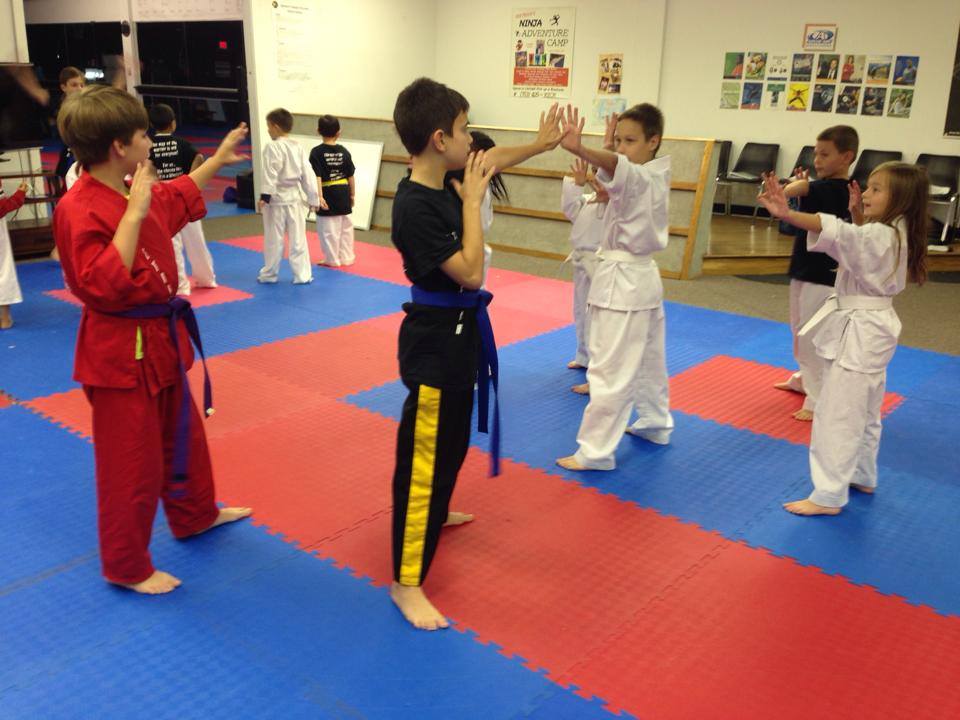Reading: We Learn in Steps
For several sessions now, the karate class is nothing but a repetition of evasive moves. The instructor says, "right", and we're supposed to move to our right. When we hear "left", we need to slide to our left. "Jump" means we jump, and most importantly, when "duck" is shouted, we must duck. Over and over again, we practice. The instructor explains that our brain must learn to automatically associate moves with the commands we hear. Sometimes, I wonder if our karate instructor know some neuroscience. Certainly, we are not our instructors's first class of students. So perhaps, the instructor has either learned this pedagogical technique from experience or from his master.
Going through these karate lessons reminds me of my years in elementary school. The teacher points to a poster with the following, and the entire class simply recites what is written over and over again: "a e i o u, ba be bi bo, bu, ka ke ki ko ku, da de di do du,..."
Why were my teachers in elementary school spending so much time on these exercises? These routines perhaps operate on the same principle that my karate instructor has based his teaching style. In this case, reading is recognized as requiring first of all phonological processing. Phonological processing is what our brain does when it associates basic component sounds with their visual representations. Our teachers learned these techniques from experience and their own teachers.
There is now physical evidence that supports what our instructors have been doing.
From kindergarten to third grade, magnetic resonance imaging (MRI) of the brain shows that during this time period there are volume changes in temporo-parietal white matter. The increase in volume is found to explain more than half of the observed variance in reading outcomes. This finding has been recently published in the journal Psychological Science. The following excerpt from the paper describes what this study may imply:
 |
| Learning karate starts with defensive moves at Dietrich Karate Studios |
 |
| Above is a screen capture from Filipino ba be bi bo bu |
Why were my teachers in elementary school spending so much time on these exercises? These routines perhaps operate on the same principle that my karate instructor has based his teaching style. In this case, reading is recognized as requiring first of all phonological processing. Phonological processing is what our brain does when it associates basic component sounds with their visual representations. Our teachers learned these techniques from experience and their own teachers.
There is now physical evidence that supports what our instructors have been doing.
From kindergarten to third grade, magnetic resonance imaging (MRI) of the brain shows that during this time period there are volume changes in temporo-parietal white matter. The increase in volume is found to explain more than half of the observed variance in reading outcomes. This finding has been recently published in the journal Psychological Science. The following excerpt from the paper describes what this study may imply:
...One possible interpretation of our data is that structural brain differences causally influence early variations in reading development. However, we measured changes in the volume of critical left-hemisphere fiber tracts during a time when children were making large strides in learning to read. Changes in volume in the structures we identified may in part reflect changes in the amount of myelin present (Fjell et al., 2008). The degree of myelination is related to the electrical activity of a particular axon (Ishibashi et al., 2006) and may reflect differences in experience that drive differences in brain development. Thus, changes in volume in the left-hemisphere fiber tracts that relate to reading acquisition in the same time window may reflect differences in brain growth that are at least partly the product of experiential influences....When little children read and recite "a e i o u, ba be bi bo, bu, ka ke ki ko ku, da de di do du,...", this may help trigger those electrical activity that the brain needs in order to develop. With so much focus on upper level thinking, there is a possibility that such emphasis may not be synchronized with how our brain actually develops. There are steps. Skipping such steps may preclude the growth that a child's brain needs.
Comments
Post a Comment